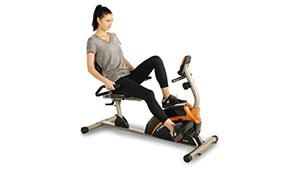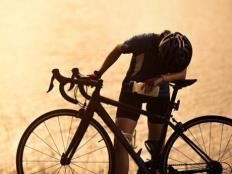Skipping Breakfast
You've heard it since you were a kid—breakfast is the most important meal of the day. When preparing to ride 100 miles, it's even more crucial.
"Glycogen supplies are limited in the body," Hughes said. "A rider should eat a good breakfast (but nothing new) primarily of carbohydrates with a bit of protein and fat."
Not Eating Enough During the Event
Your gas tank doesn't hold enough for you to ride 100 miles, which takes many cyclists 8-plus hours. Hughes recommends eating at least 200 calories per hour and probably closer to 300 calories per hour.
Not Eating Regularly During the Event
Similar to the last point, but it's important to keep that your intake is not only adequate, but consistent.
"If a rider eats at a rest stop, rides several miles to the next rest stop and then eats again, then the rider's energy may fade in between stops," Hughes said. "The rider should eat 200-300 calories every hour."
More: 4 Nutrition Secrets for Your First Century Ride
Improper Hydration
Pack a couple of drink bottles but don't go crazy. "We were taught to drink before we are thirsty; however on multi-hour rides drinking too much may dilute the blood sodium, resulting in hyponatermia, a potentially dangerous condition. Drink enough to satisfy thirst but not more," Hughes said.
Improper Pacing
When you're amped for an event, it can often lead to pacing problems. That is, you can come out of the gate way too fast. You will pay for it later, so don't let your adrenaline win this battle.
"If a rider can't ride with a group at a conversational pace, then drop off," Hughes said. "The right group is behind you!"
Getting Lost
Most century ride events are clearly marked, but even so, a 100-mile course leaves a lot of opportunities to get lost. Be aware of where you are throughout the ride.
"A rider shouldn't assume that the group he is with is on course," Hughes said. "He should pay some time in advance studying the cue sheet and then double-check each turn."
Inappropriate Equipment
Make sure your bike is made for long-distance events and not a quick-burst race like a criterium.
"Bike shops generally sell a range of racing-style road bikes," Hughes said. "These may have a fairly short wheelbase and straight fork, which makes for quick responsiveness in a criterium, but the bike is harder to ride straight and the ride is harsher.
"The bike may have a significant drop between the saddle and the handlebars, great for aerodynamics in a road race but tiring on a century. The bike may have reduced spoke count wheels, which make for a faster acceleration but aren't as durable as wheels with 32 spokes."
In short: if you're buying a bike, make sure the shop is aware of your needs and what exactly you're using it for. It could make a big difference when you take off on your 100-mile journey.
More: 3 Ways to Prepare for a Century Ride
Register for a century or other cycling event near you.
- 2
- of
- 2









Discuss This Article